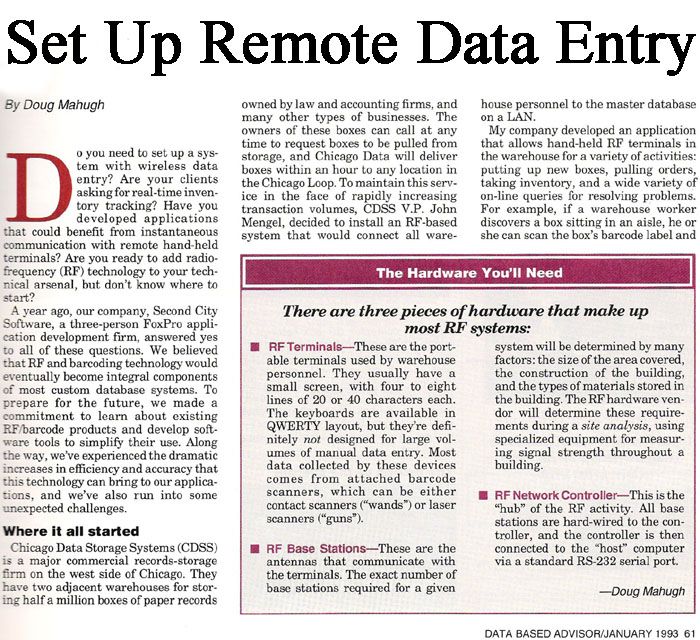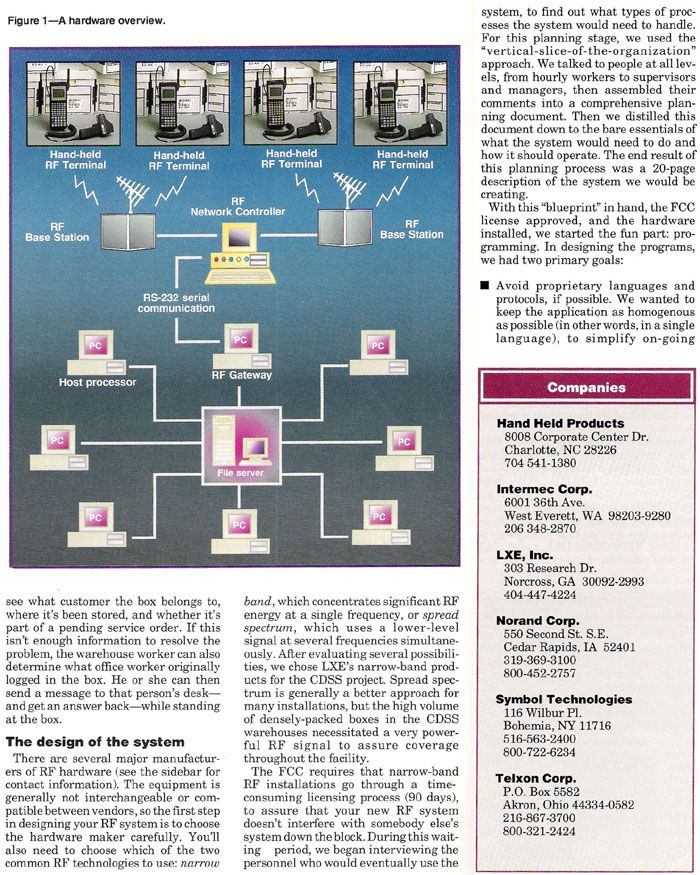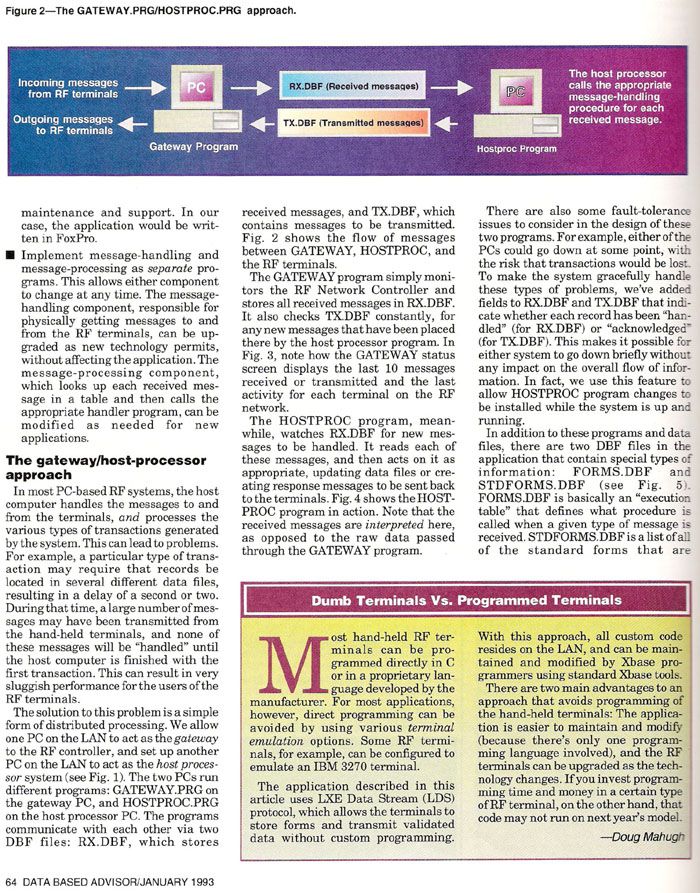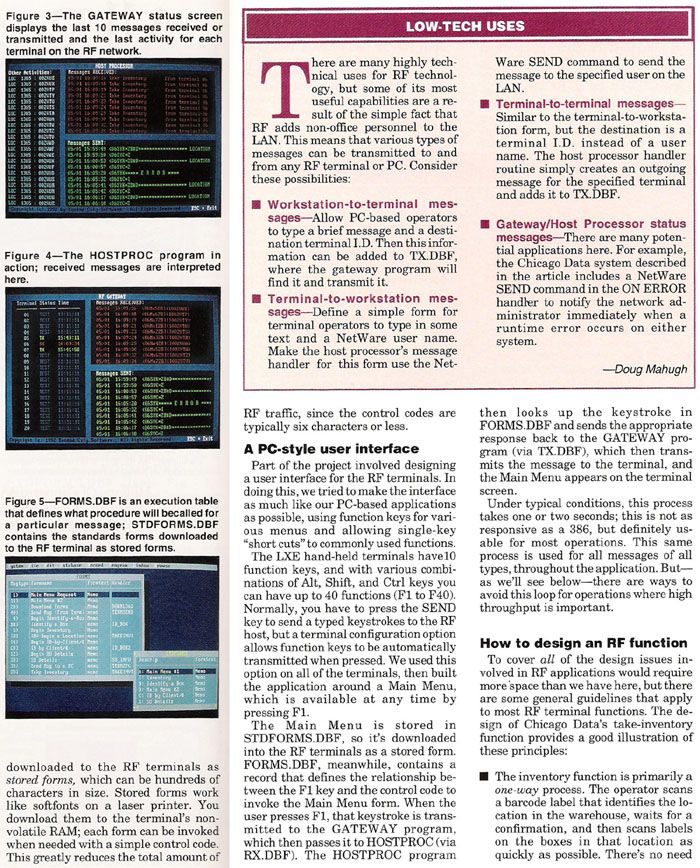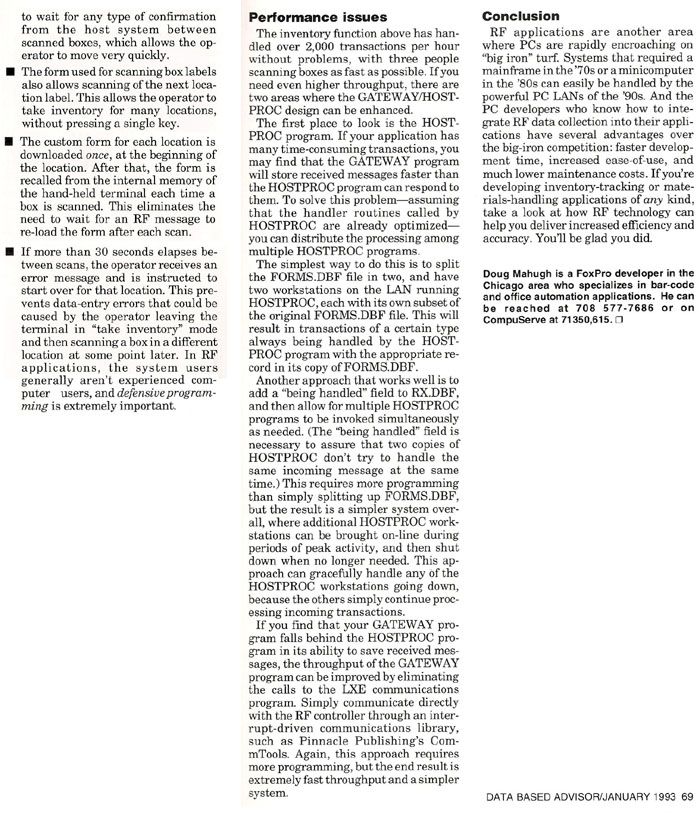Hand-held computing in 1991
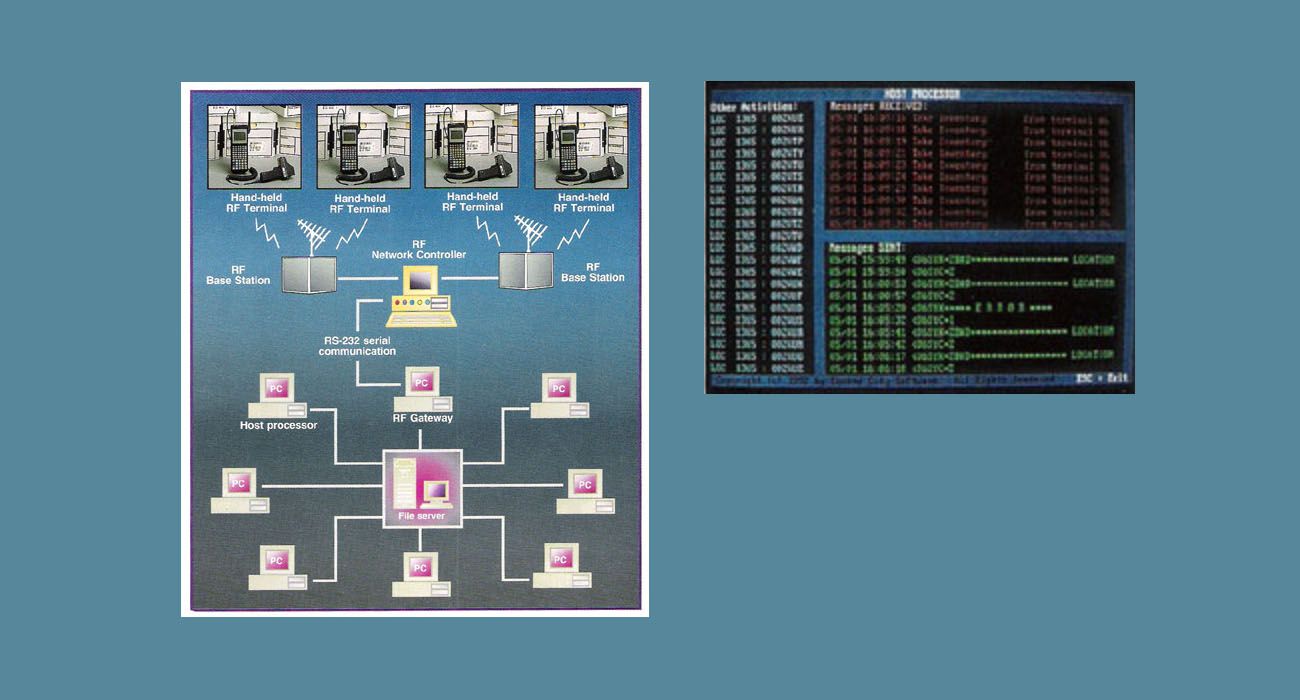
In the early 1990s, Second City Software's biggest client was a records storage firm on the west side of Chicago (near Ogden & Western). A massive warehouse at that location held millions of paper files, and the firm offered 1-hour rush delivery of any box of files to their clients in the Chicago Loop: law firms, accounting firms, investment bankers, and others.
When I started doing business with them in 1988, I took over maintenance of a custom dBase III tracking and billing system running on a Novell Netware 2.15 network. After a couple of years I convinced them to invest in a complete re-write in FoxPro/DOS, and a year later in 1992 I developed a system to integrate hand-held terminals with that system. The hand-held terminals communicated with a base station via narrow-band RF, and I wrote an interface in 8086 assembly that allowed the base station to read and write messages in FoxPro DBF files that were then processed by the main tracking system. Higher-frequency spread spectrum RF had taken over the logistics and distribution industry by that time, but it was essentially useless in a warehouse full of loosely packed paper, which was a worst-case scenario for radio frequency communications.
There were many fun technical challenges in this project, including LXE's proprietary forms language for the terminals, the ASM-FoxPro interface, and the queueing of inbound and outbound messages. LXE's hardware had never been integrated with a LAN before, so I was making things up as I went. Here's a high-level view of the architecture:

In 1996, that records storage facility was acquired by Iron Mountain. The RF system I had designed and developed was still in use, so I took some satisfaction in the fact that Iron Mountain's press release said they were acquired for "market share and advanced technology."
I wrote an article for Data Based Advisor magazine (the most popular magazine of the Xbase community at the time) that described the details of this project, and below is a copy of the article, which was published in January 1993.
